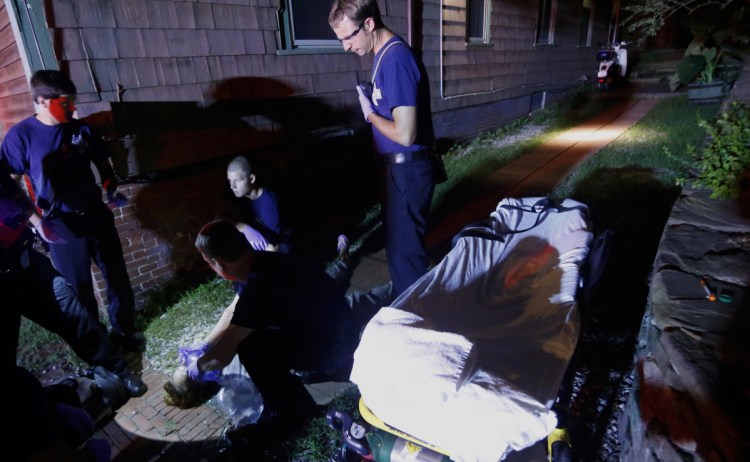A president’s budget proposal is more a statement of his priorities than a spending plan, as Congress typically tosses it aside quickly in favor of its own work. And for most of the Trump administration’s budget, a cruel and irresponsible proposal released Monday, the bottom of a trash can would be too good of an end.
But before the proposal is thrown promptly into the proverbial circular file cabinet, Congress should rip out the section on the opioid epidemic. For the first time, the Trump administration has provided a hint on how it wants to fight the deadly crisis – and there is a lot to like. As long as you ignore the bad stuff.
First off, Trump’s proposal offers funding that attempts to meet the size of the epidemic – $13 billion in new funding over two years, following the $6 billion Congress included in the two-year budget approved earlier this year.
For context, the United States spent $24 billion a year on HIV/AIDS at the peak of that crisis in the mid-1990s, when it claimed around 41,000 lives a year.
Last year, opioid overdoses killed 64,000 Americans, and the epidemic is estimated to have cost the U.S. economy $1 trillion and counting since 2001. Costs may exceed $500 billion for the next three years as the crisis worsens.
Secondly, the proposal embraces what the police officers and treatment providers on the ground of the epidemic have been saying for years – that this crisis will be overcome only when proven forms of treatment and rehabilitation are available everywhere.
Trump’s budget would expand grants to states for prevention, treatment and recovery support services. More importantly, it suggests expanding Medicaid coverage of medication-assisted treatment.
More details are needed here, but just putting medication-assisted treatment at the head of the discussion is a step forward. Medications such as methadone or buprenorphine are the most effective form of intervention available, yet they are – inexcusably – still scarcely available. Making them more accessible could save thousands of lives.
The budget is not all rosy on this topic, however. Any progress resulting from this plan could be negated by initiatives elsewhere in the budget, and in the administration.
The budget calls for significant cuts in Medicaid, through which 40 percent of nonsenior adults with addiction get their health care coverage. Again, the administration wants to repeal Obamacare, which some experts feel could wipe out any gains from the increased spending on addiction.
The spending plan also, once again, attempts to all but eliminate the Office of National Drug Control Policy. That’s after the president nominated for its director a congressman who had sought to limit the Drug Enforcement Administration’s ability to investigate the opioid manufacturers and distributors who contributed so heavily to the start of the epidemic.
Trump has also put Kellyanne Conway, a political operative with no public health experience, in charge of his office’s response to the opioid epidemic. Reports indicate that Conway has frozen out addiction experts; her group’s contribution to the debate so far has been to back the useless and costly Mexican border wall, and to call for a renewal of the widely discredited “just say no” campaign.
It’s hard to make sense of such conflicting actions, and there’s really no reason to. We’ll just say that the president has offered a real plan for the opioid epidemic, one based on evidence and experience, and we’ll forget the rest. Congress should, too.
Send questions/comments to the editors.



Comments are no longer available on this story